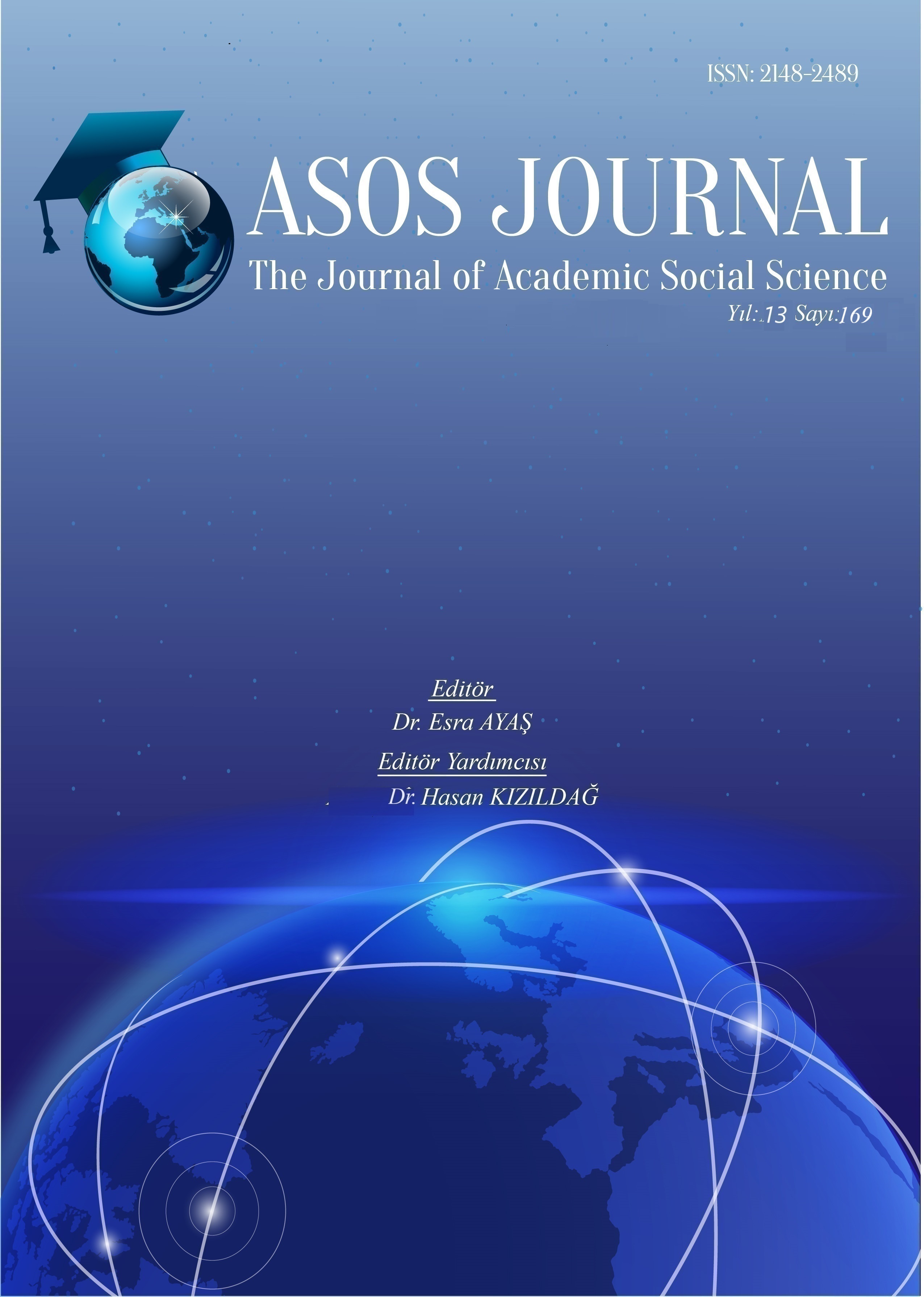MASAL İLLÜSTRASYONLARINDA ANLATI VE MEKÂN KURGUSU: GÖRSEL İLETİŞİM TASARIMI BAĞLAMINDA BİR PROPP ANALİZİ
Author :
Abstract
Masal illüstrasyonları, yalnızca görsel süsleme işlevi görmekle kalmaz; aynı zamanda anlatının mekânsal kurgusunu destekleyen, olayların dramatik yapısını güçlendiren ve okuyucunun metinle kurduğu duygusal bağı derinleştiren anlatı bileşenleri olarak değerlendirilmelidir. Bu bağlamda, illüstrasyonlar metindeki anlatı işlevleriyle örtüşerek, görsel hikâye anlatımında yönlendirici bir rol üstlenir ve okuyucunun hayal gücünü tetikleyen etkileşimli bir anlatı ortamı oluşturur.Bu çalışma, masal illüstrasyonlarının anlatı yapısı ile görsel mekân kurgusu arasındaki ilişkiyi görsel iletişim tasarımı perspektifiyle incelemeyi amaçlamaktadır. Masalların yalnızca metinsel değil, aynı zamanda görsel bir anlatı yapısına sahip olduğu kabulünden hareketle, illüstrasyonların anlatının estetik bütünlüğünü ve mekânsal algısını nasıl şekillendirdiği araştırılmıştır. Çalışmada örneklem olarak Alice Harikalar Diyarında ve Hansel ve Gretel masalları seçilmiştir. Bu seçim, amaçlı örneklem yöntemi doğrultusunda, söz konusu masalların dünya edebiyatında köklü bir yere sahip olmaları ve farklı illüstratörler tarafından yeniden yorumlanmaları sayesinde karşılaştırmalı çözümleme için zengin bir zemin sunmalarına dayanmaktadır. Araştırma nitel yöntemle yürütülmüş; Vladimir Propp’un masal çözümleme modeliyle anlatı işlevleri belirlenmiş, ardından illüstrasyonlar mekân ve kompozisyon özellikleri açısından incelenmiştir. Bu çerçevede renk, çizgi ve doku gibi görsel iletişim unsurlarının metinsel işlevlerle nasıl örtüştüğü ve masalların mekânsal atmosferini nasıl yapılandırdığı değerlendirilmiştir. Bulgular, illüstrasyonların yalnızca metne eşlik eden süsleyici ögeler değil; anlatının dramatik yapısını güçlendiren, mekân algısını yönlendiren ve görsel iletişimi pekiştiren işlevsel tasarım bileşenleri olduğunu göstermektedir. Çalışmanın özgün yanı, Propp’un yapısalcı anlatı çözümlemesini görsel iletişim tasarımı bağlamında illüstrasyon analiziyle birleştirmesidir. Bu yaklaşım, masal illüstrasyonlarının çocukların algısına, hayal gücüne ve mekânsal deneyimine katkısını disiplinlerarası bir düzlemde görünür kılmaktadır.
Keywords
Abstract
Fairy tale illustrations not only function as visual ornamentation; they should also be considered as narrative components that support the spatial fiction of the narrative, strengthen the dramatic structure of the events and deepen the emotional connection the reader establishes with the text. In this context, illustrations overlap with the narrative functions in the text, take on a guiding role in visual storytelling and create an interactive narrative environment that triggers the reader's imagination. This study aims to examine the relationship between the narrative structure of fairy tale illustrations and the visual spatial fiction from the perspective of visual communication design. Based on the assumption that fairy tales have not only a textual but also a visual narrative structure, this study investigates how illustrations shape the aesthetic integrity and spatial perception of the narrative. The fairy tales Alice in Wonderland and Hansel and Gretel were selected as samples in the study. This selection, in line with the purposive sampling method, is based on the fact that these fairy tales have a deep-rooted place in world literature and that they offer a rich ground for comparative analysis thanks to their reinterpretations by different illustrators. The research was conducted with a qualitative method; Narrative functions were identified using Vladimir Propp's fairy tale analysis model, and then the illustrations were examined in terms of spatial and compositional characteristics. Within this framework, how visual communication elements such as color, line, and texture overlap with textual functions and how they structure the spatial atmosphere of the fairy tales was evaluated. The findings demonstrate that illustrations are not merely decorative elements accompanying the text; they are functional design components that strengthen the dramatic structure of the narrative, direct spatial perception, and reinforce visual communication. The study's unique feature is its integration of Propp's structuralist narrative analysis with illustration analysis within the context of visual communication design. This approach reveals the contribution of fairy tale illustrations to children's perception, imagination, and spatial experience on an interdisciplinary level.





